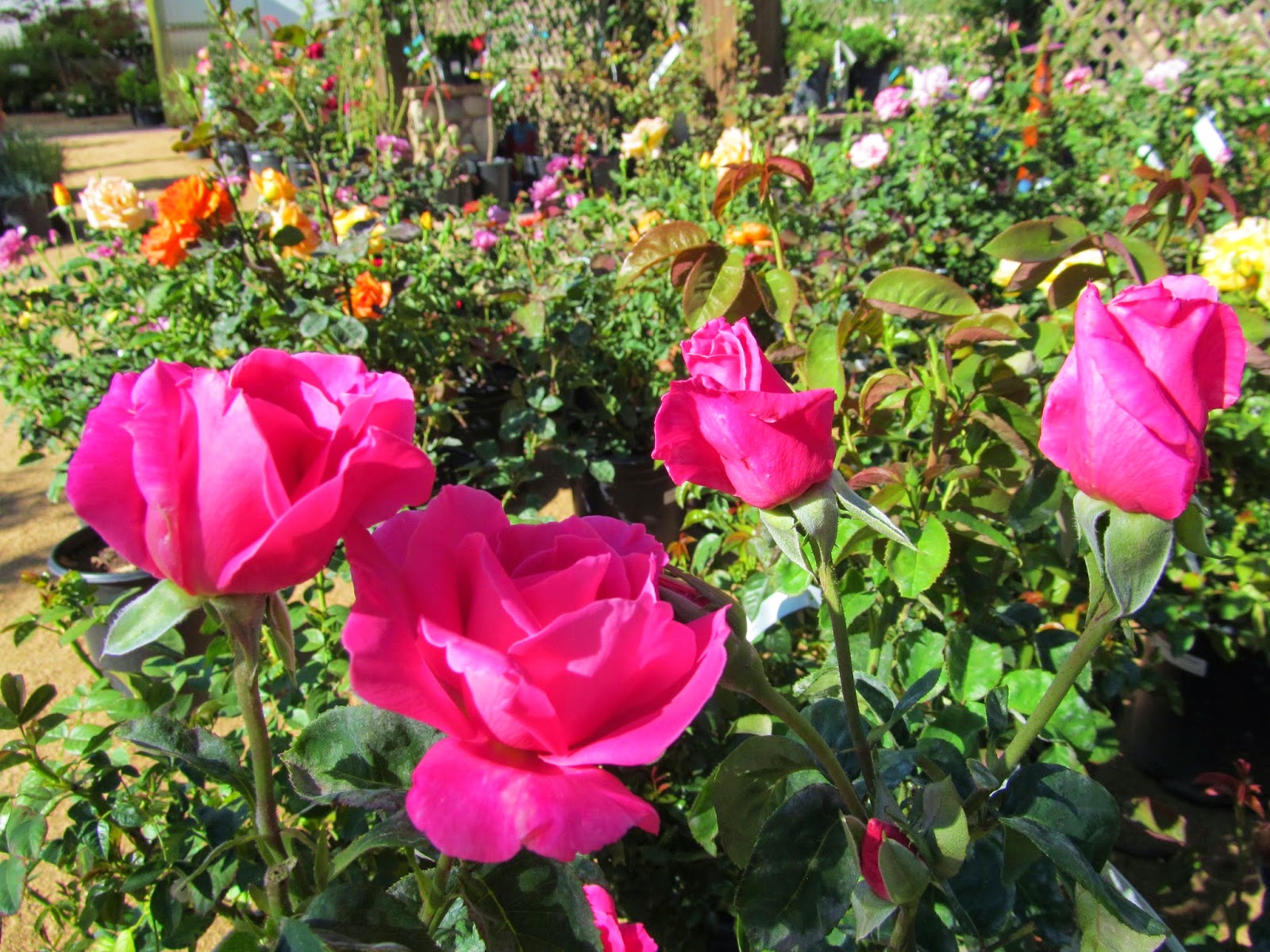Wednesday, April 15, 2015
A rose by any other name... Varieties each have a different visual impact on your garden
Just stop and smell the roses." My grandmother would give me this time-honored advice as a young girl. She also gave me my love of the rose. Her huge rose gardens were her pride and passion and I loved helping her tend them when I visited her. Needless to say, the rose is my all-time favorite flower. There are many different types and varieties that thrive in our Northern Arizona climate. The following are the types you'll find at our garden center and the other local centers in our quad cities area.
• Hybrid tea roses have well- formed blooms and sturdy canes. They are excellent garden plants suitable for cutting gardens, single plantings or in mixed beds with other perennials, shrubs and roses.
• Grandiflora roses are similar to hybrid teas in habit and size and are often grouped with the Hybrid teas for convenience. Grandifloras generally are tall plants that present their blooms in clusters rather than as on-per-stem.
• Floribunda roses are excellent roses to use in your landscape. Where hybrid teas typically carry only one bloom per stem, Floribundas present their blooms in clusters or sprays. They are excellent roses for landscaping as they are shorter than hybrid teas and they produce profuse clusters of blooms from spring until the first frost. Many floribundas have an upright habit making them a great choice for a low hedge or border.
• Climbing roses are very versatile. You'll find hundreds of ways to include them in your garden. Along a fence, climbing poles, pillars, trellises, arches, or even covering the side of a house.
• Landscape shrub roses are easy to care for and are beautiful in the home landscape. They offer repeat flowering color throughout the season without the burden of heavy maintenance. They provide a wide range of growth habits that will fit into formal or informal gardens.
• Miniature roses are hardy and easy to grow. These compact roses bloom from spring until fall. They perform well when used as a border and are spectacular in containers. The many vibrant colors will add a pop of color to your home garden or landscape.
• Tree roses offer a variety of unique ways to add color to your home or garden. They look great around a patio and offer a cheerful greeting when used to outline the entrance to your home or garden.
Plant roses where they will get at least six hours of sun daily. Plant in well-draining soil, amended with compost or peat moss and gypsum. Use generous spacing to allow for good air circulation, which will help in reducing mildew, black spot and other foliage diseases. Regular fertilizing, with a systemic insecticide included, is needed to produce the most gratifying results and to keep the pests at bay. Water deeply and regularly during the growing season. Inadequate watering inhibits growth and bloom.
Annual pruning of your roses will contribute to the health, productivity and longevity of your roses. The basic objective is to promote strong growth that will bear good flowers. The best time for pruning roses is at the end of the dormant season when growth buds begin to swell. In our quad-city area, where late frosts are common, be sure not to prune too early. The resulting new growth will be vulnerable to freezes. Prune conservatively, pruning out wood that is dead or has no healthy growth coming from it as well as any unproductive old canes. The ideal result is a V shaped bush with a relatively open center.
And most important of all... don't forget to stop and smell the roses!
Susie Burgin is the owner of Earthworks Garden Center and Landscape Supplies at 2531 N. Hwy. 89 in Chino Valley. Visit www.earthworksgardensupply.com.
Labels:
Arizona,
arizona landscaping,
Ashfork,
chino valley,
Earthworks Garden Supply,
Flagstaff,
Garden Center in Chino Valley,
gardening,
Paulden,
prescott,
roses,
Sedona,
yard decor,
yards
Location:
Chino Valley, AZ, USA
Subscribe to:
Comments (Atom)
